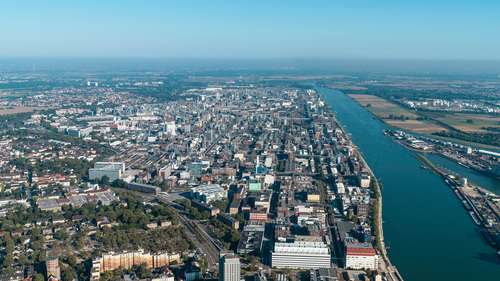BASF’s new isopropanolamine plant started up
BASF has started up a new production facility for isopropanolamines (IPOA) at its Ludwigshafen site. With an annual capacity of 15,000 metric tons, this is the sole dedicated facility of this type in Europe. It replaces the existing multi-product facility used to date to produce isopropanolamines. By expanding its capacity the company responds to the growing demand for these versatile intermediates. BASF counts among the leading global suppliers of amines and is one of the major IPOA manufacturers.
The new plant uses an improved process: A product mixture comprising mono-, di- and triisopropanolamine(MIPOA, DIPOA, TIPOA) is produced from propylene oxide and ammonia. The new process ensures better control over the composition of this mixture, enabling BASF to respond more flexibly to its customers’ needs.
Isopropanolamines are high-grade intermediates that are suitable for many different applications. They are used effectively in gas scrubbing and in the production of cement additives, colorants and pigments, surfactants, pharmaceuticals and crop protection agents, in corrosion inhibitors and lubricants. Customers appreciate in particular the high level of delivery reliability and the consistently high product quality BASF achieves thanks to its complete backward integration.
“This new plant covers the entire IPOA product range, from standard isopropanolamines to symmetrical DIPOA and dimethylisopropanolamine,” says Dr. Winfried Müller, head of the Regional Business Unit Amines within BASF’s Intermediates Operating Division, “We can now respond with great flexibility to our customers’individual needs and supply these intermediates in their pure form or as aqueous solutions available at different concentrations.”
Isopropanolamines form part of the amine range, second to none in the world, which is supplied by theIntermediates Operating Division of the BASF Group. This BASF division develops, produces and markets the world's largest range of intermediates. The most important of the division's more than 600 products include amines as well as diols, acids, poly alcohols and specialties. Among other applications, chemical intermediates are used as starting materials for coatings, plastics, pharmaceuticals, textile fibers,detergents and crop protectants. The operating division has access to plants at 15 production sites in Europe, Asia, and the Americas. In 2004, this BASF operating division with 2,850 employees generated world sales of Euro 2 billion (2003: Euro 1.8 billion).
Categories
Investments
Countries
Companies
Latest news
INEOS launches €250m investment supported by the French Government to secure the future of French industry at Lavera
The project marks the first phase of a long-term regeneration plan to reduce emissions, boost reliability, efficiency and competitiveness, with support of the French State.
Hycamite’s technology to decarbonize shipping awarded AiP by industry leader DNV
Kokkola Industrial Park →Hycamite’s proprietary Thermo-Catalytic Decomposition (TCD) technology offers a new approach to producing clean hydrogen by breaking down methane, the primary component of liquefied natural gas (LN...
Clariant catalysts will power the Ecoplanta: Europe's first waste-to-methanol plant
Chemmed Cluster Tarragona →Repsol is building Europe’s first plant to produce renewable methanol from urban waste The facility will use Enerkem gasification technology to produce 240 KTA of methanol Clariant will supply cata...
Lilly plans to build a new $3 billion facility to boost oral medicine manufacturing capacity in Europe for patients worldwide
Netherlands site will bring 500 manufacturing and 1,500 construction jobs while further strengthening Lilly's global supply chain

